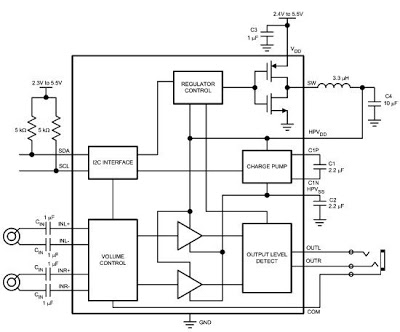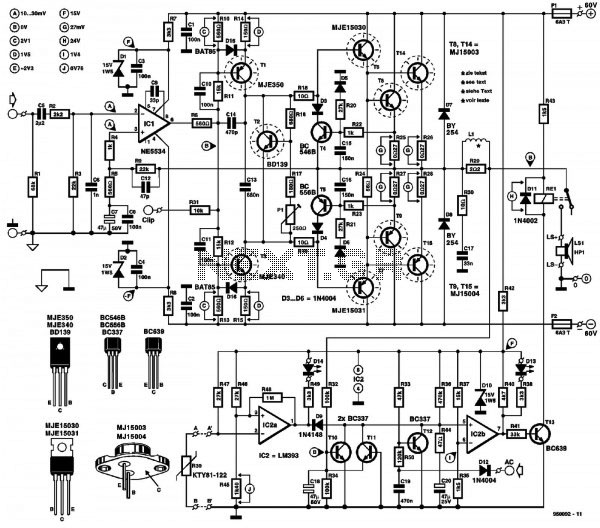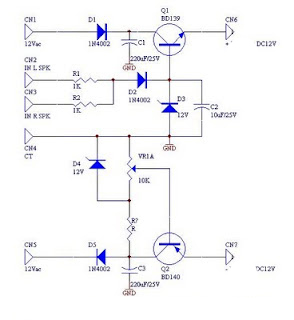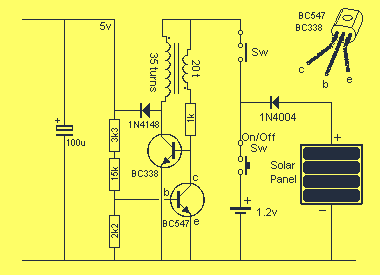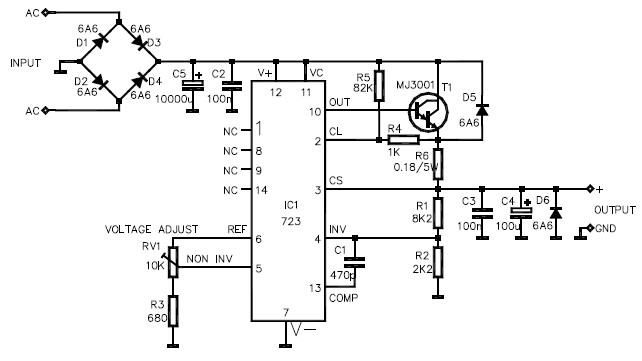
Power Amplifier 50W

This simple audio power amplifier was originally designed for a circuit board workshop, conducted by the OSU IEEE Student Group. At the workshop, 20 participants each constructed this amplifier, by etching and drilling the single sided circuit board, soldering all components, and attaching a pre-built heatsink assembly with the output transistors. Three workshops were held between 1995 to 1996.
Additional Content: The audio power amplifier in question is a fundamental piece of equipment used to amplify the strength of audio signals. Its design is straightforward, making it an excellent introductory project for those learning about circuit boards and electronic components. The amplifier was constructed on a single-sided circuit board, a type of board that contains copper tracks on only one of its surfaces.
The construction process involved several key steps. First, participants etched the circuit design onto the board, a process that involves removing unwanted copper to reveal the desired circuit pattern. Next, they drilled holes in the board for the components' leads.
The next step was soldering, which is the process of joining together two or more metal items by melting and flowing a filler metal (solder) into the joint. This is a crucial step in circuit board assembly, as it ensures a good electrical connection between the components. In this case, all the components of the amplifier, including resistors, capacitors, and transistors, were soldered onto the board.
The final step was attaching a pre-built heatsink assembly with the output transistors. A heatsink is a passive heat exchanger that cools a device by dissipating heat into the surrounding medium. In an amplifier, the output transistors can generate a significant amount of heat, especially when the amplifier is operating at high power levels. The heatsink assembly helps to prevent the transistors from overheating, thus ensuring the stable operation of the amplifier.
The construction of this simple audio power amplifier was done in three workshops held between 1995 and 1996. It not only provided hands-on experience to the participants but also served as a practical demonstration of the principles of electronic circuit design and assembly.This simple audio power amplifier was originally designed for a circuit board workshop, conducted by the OSU IEEE Student Group. At the workshop, 20 participants each constructed this amplifier, by etching and drilling the single sided circuit board, soldering all components, and attaching a pre-built heatsink assembly with the output transistors.
Three workshops were held between 1995 to 1996. 🔗 External reference
Additional Content: The audio power amplifier in question is a fundamental piece of equipment used to amplify the strength of audio signals. Its design is straightforward, making it an excellent introductory project for those learning about circuit boards and electronic components. The amplifier was constructed on a single-sided circuit board, a type of board that contains copper tracks on only one of its surfaces.
The construction process involved several key steps. First, participants etched the circuit design onto the board, a process that involves removing unwanted copper to reveal the desired circuit pattern. Next, they drilled holes in the board for the components' leads.
The next step was soldering, which is the process of joining together two or more metal items by melting and flowing a filler metal (solder) into the joint. This is a crucial step in circuit board assembly, as it ensures a good electrical connection between the components. In this case, all the components of the amplifier, including resistors, capacitors, and transistors, were soldered onto the board.
The final step was attaching a pre-built heatsink assembly with the output transistors. A heatsink is a passive heat exchanger that cools a device by dissipating heat into the surrounding medium. In an amplifier, the output transistors can generate a significant amount of heat, especially when the amplifier is operating at high power levels. The heatsink assembly helps to prevent the transistors from overheating, thus ensuring the stable operation of the amplifier.
The construction of this simple audio power amplifier was done in three workshops held between 1995 and 1996. It not only provided hands-on experience to the participants but also served as a practical demonstration of the principles of electronic circuit design and assembly.This simple audio power amplifier was originally designed for a circuit board workshop, conducted by the OSU IEEE Student Group. At the workshop, 20 participants each constructed this amplifier, by etching and drilling the single sided circuit board, soldering all components, and attaching a pre-built heatsink assembly with the output transistors.
Three workshops were held between 1995 to 1996. 🔗 External reference
